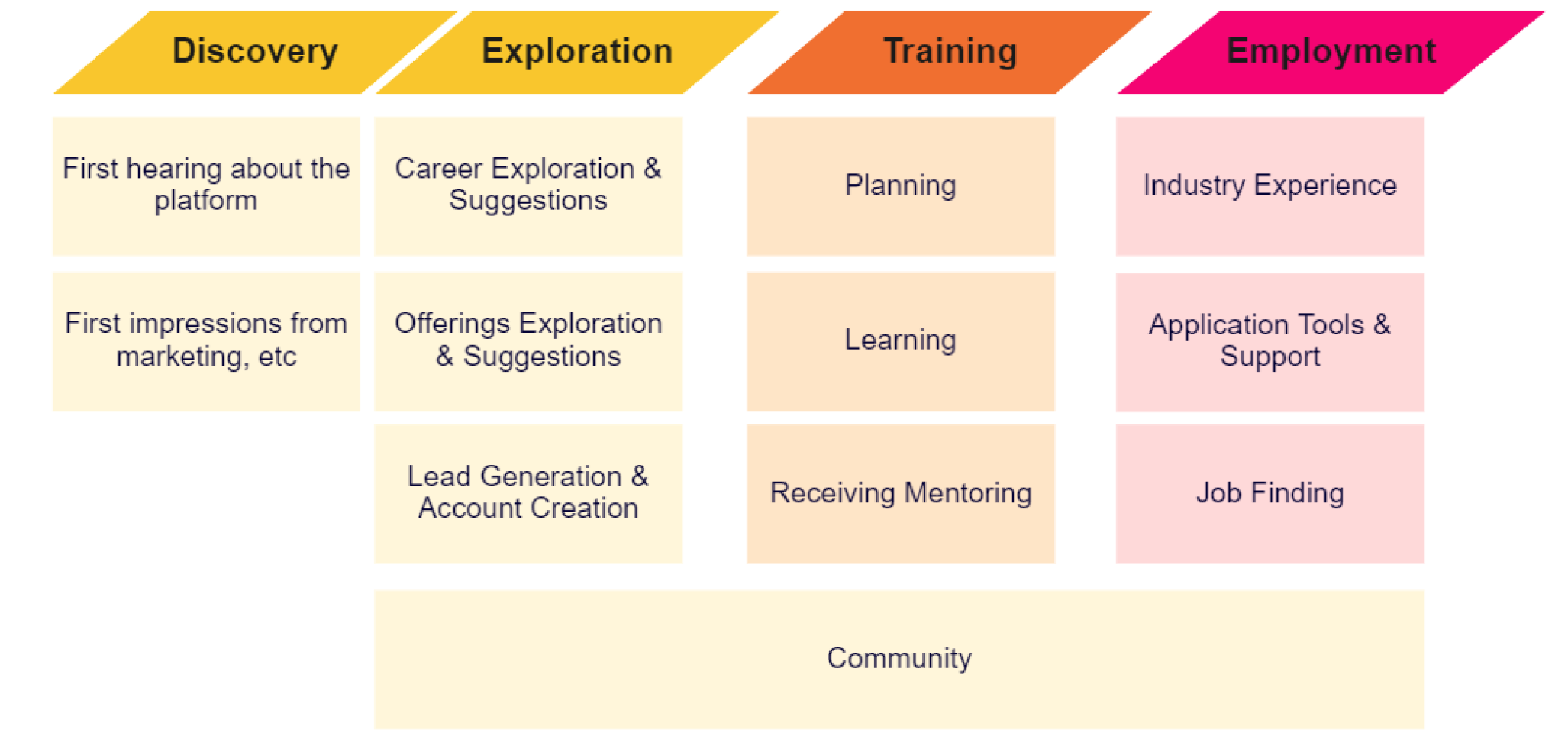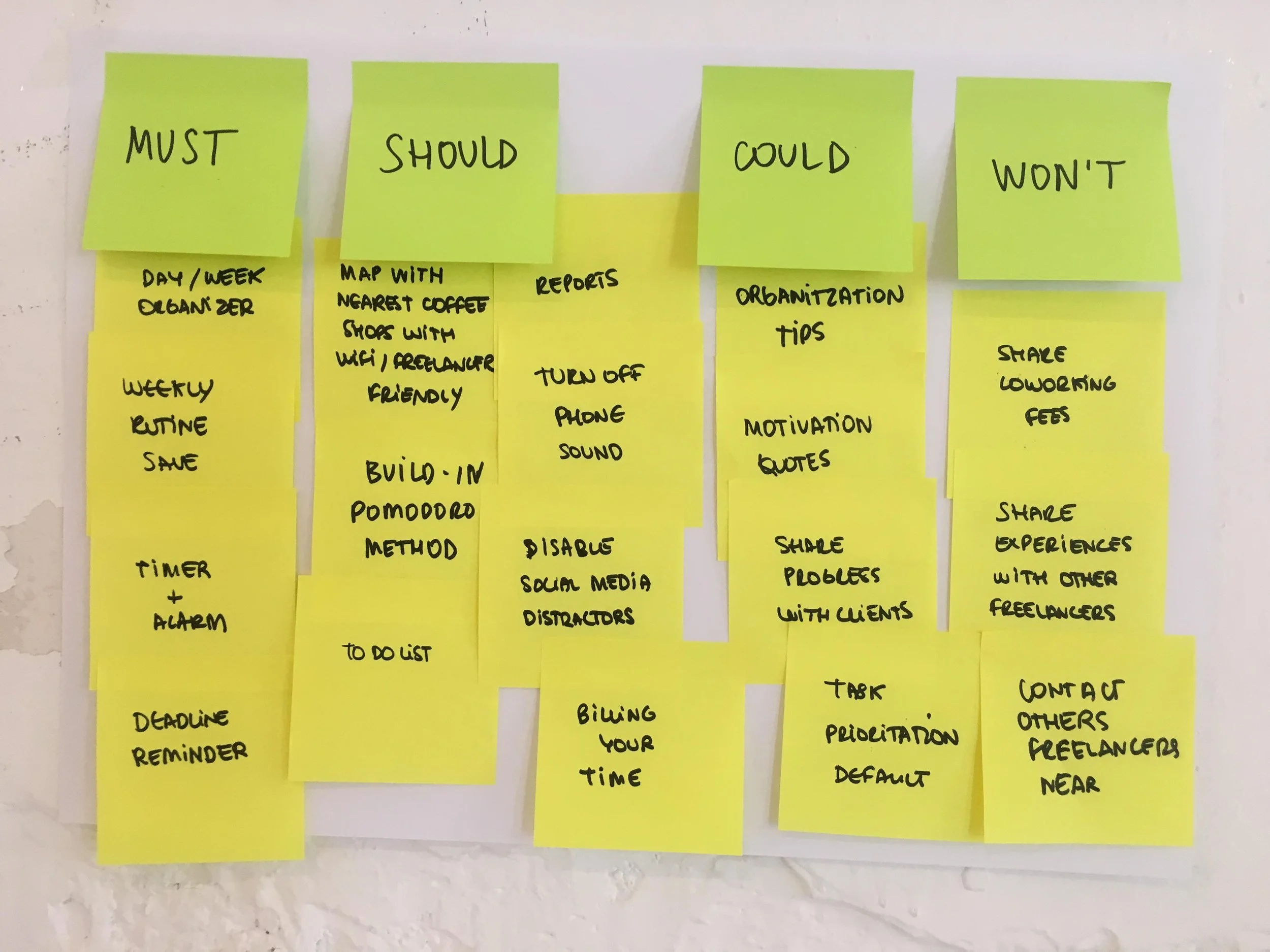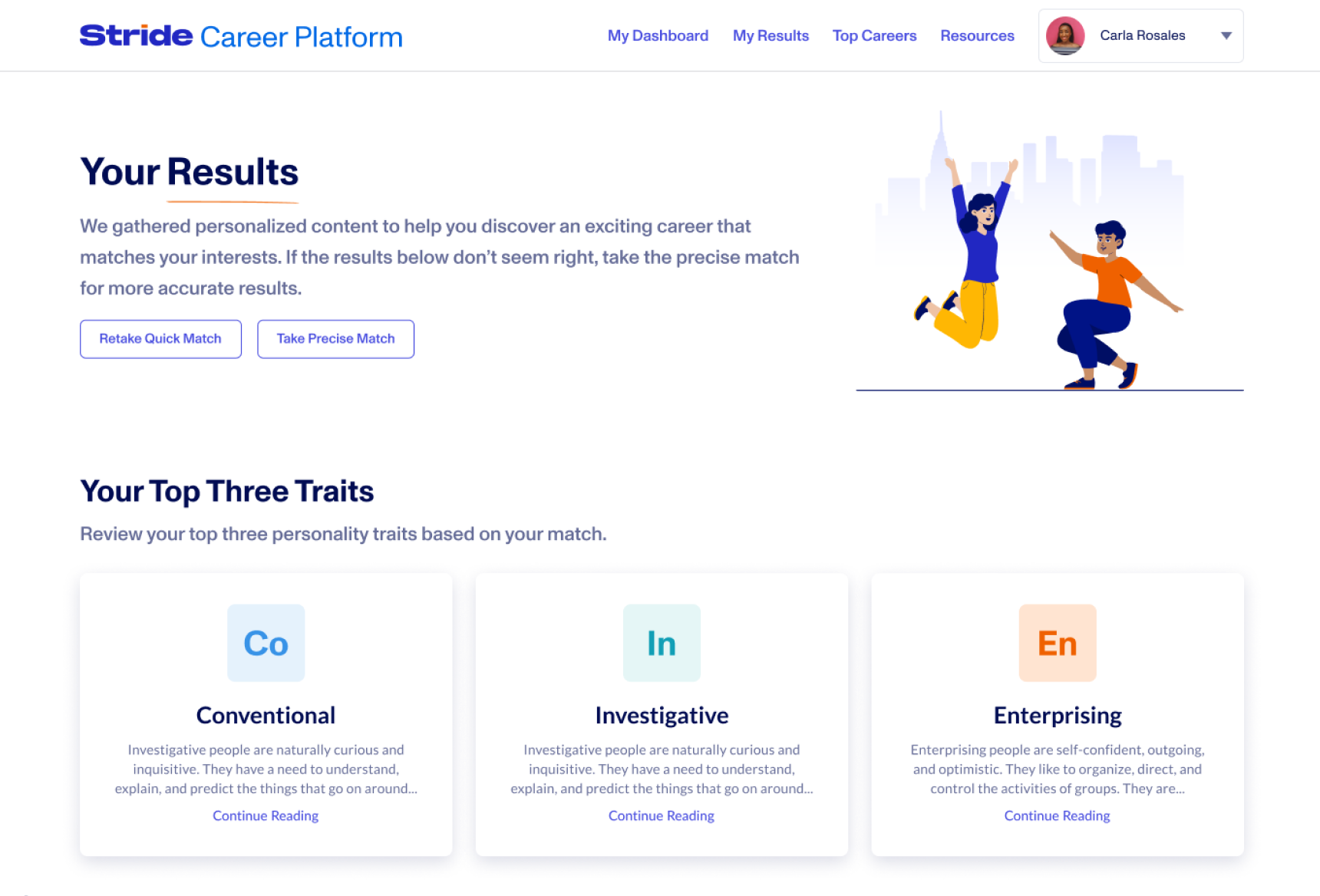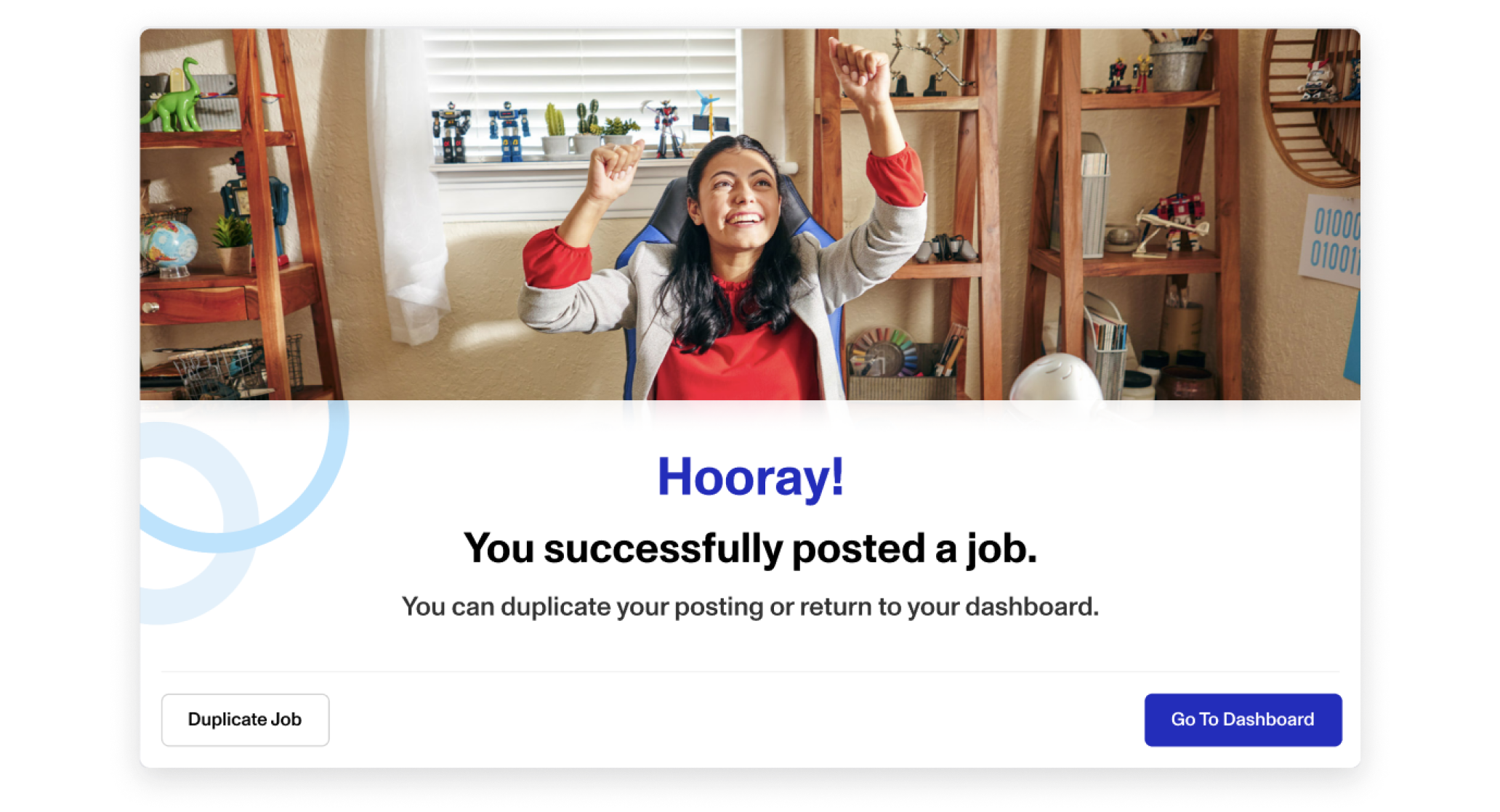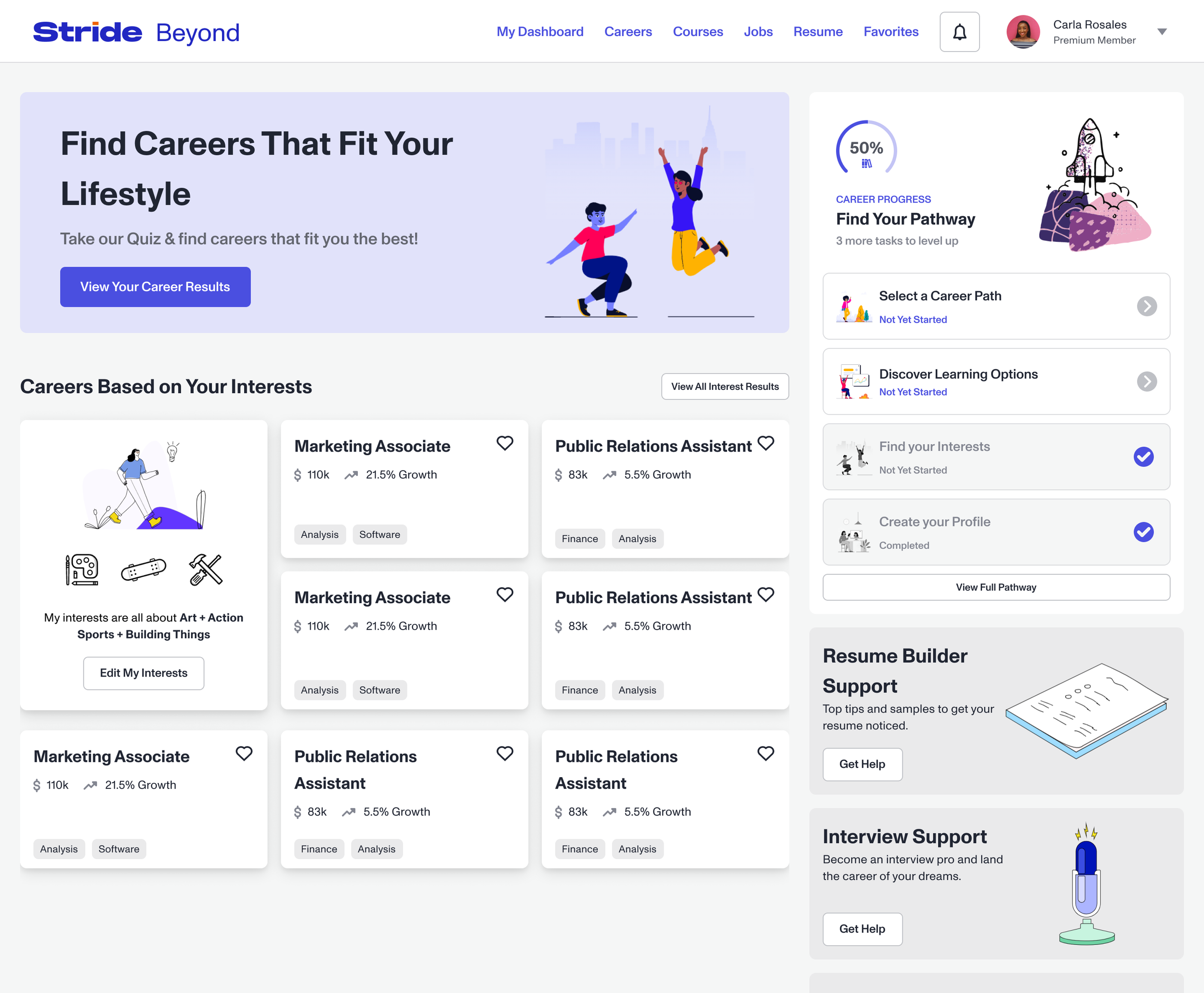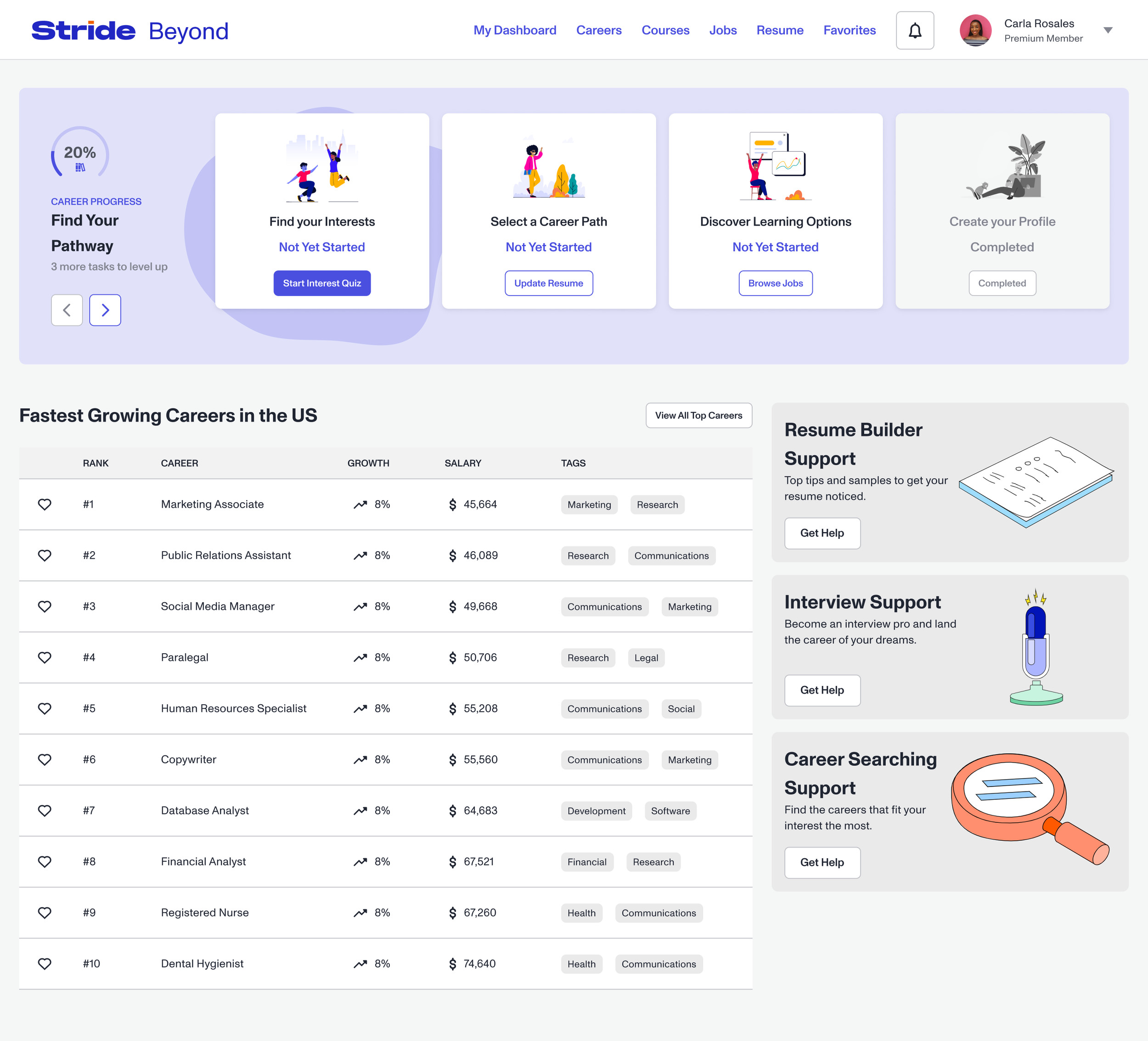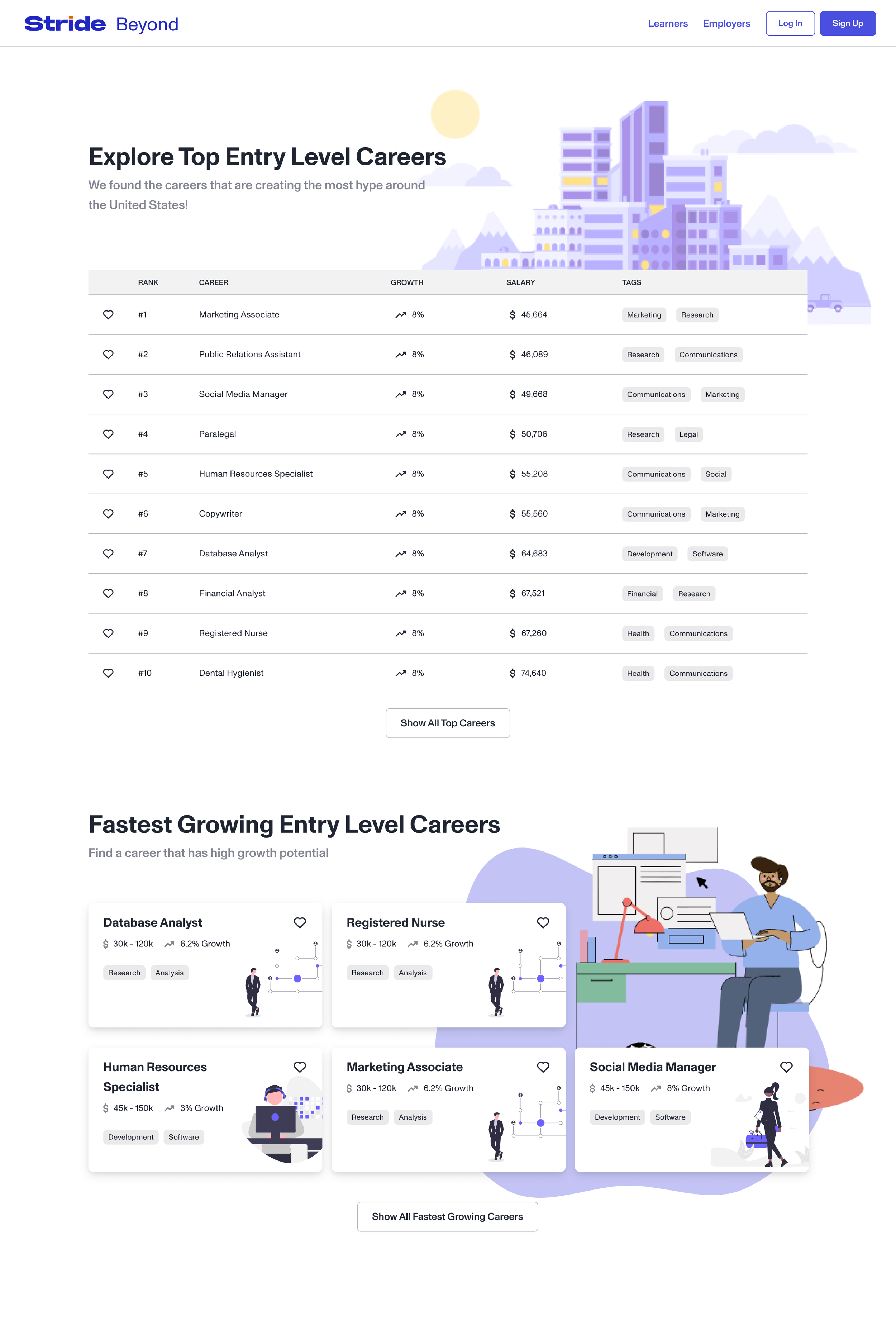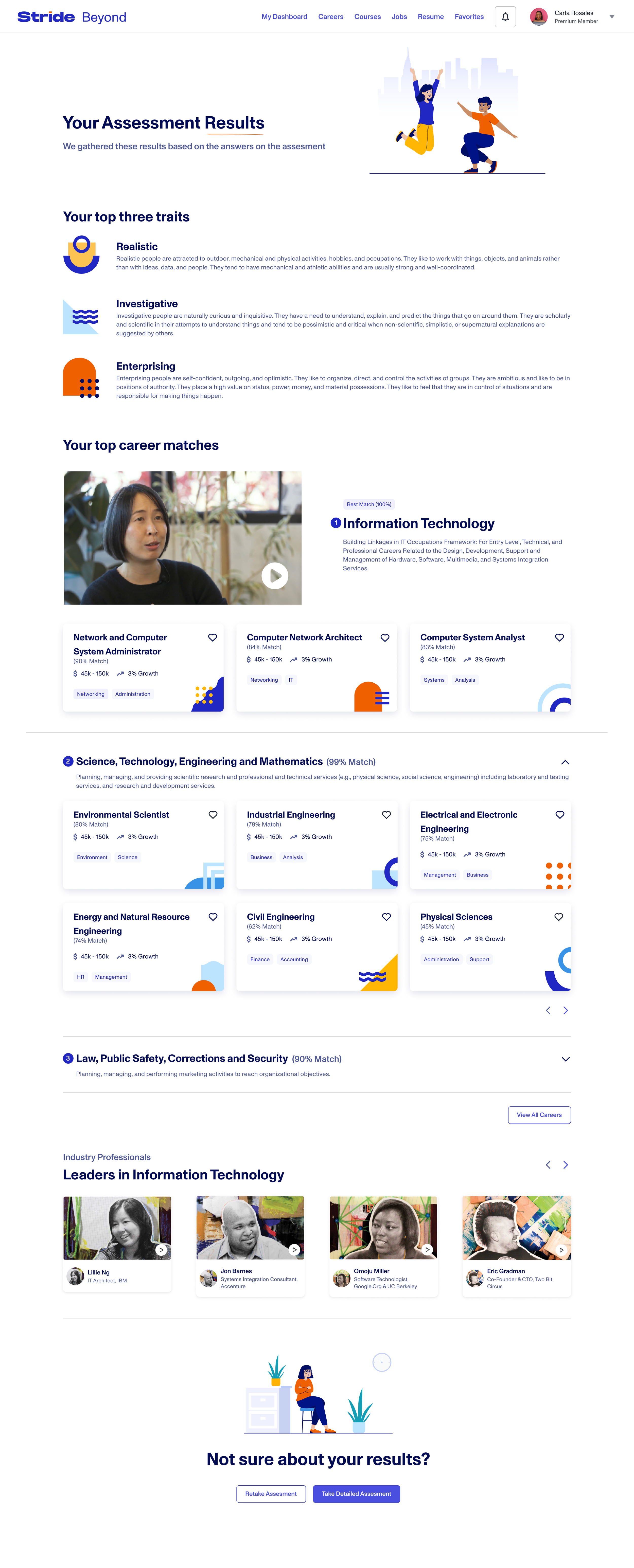
Stride Career Platform
The Case
CaaP is Strides' career platform, designed to guide learners from career discovery to getting the job they want.
Problem Statement
The client's goal was to develop a user-friendly platform for career advancement and learning, attracting diverse audiences on a large scale. To achieve this, the platform incorporated features such as job placement services, career coaching, and alumni associations while ensuring revenue streams for profitability.
But, no revenue streams were in place to secure product profitability.
Acting as a Lead Product Designer, I prioritized user needs and expectations while creating a visually appealing and easy-to-use platform. Scalability and security were top priorities to accommodate many users while ensuring data protection.
Discovery
A Goal Alignment Workshop was conducted to align with business goals, including an Entity Relationship Diagram to understand different entities' connections and unravel problems. The team identified the need to differentiate from competitors, creating the "recruiter flow."
The flow focused on two roles: Individual Recruiter and Pipeline Recruiter, helping employers access Stride's early talent pool.
Workshops
Goal Alignment
System Modeling
User Story Mapping
This workshop gets everyone involved to agree on the project goals. We most notably focused on business goals and the client's current business model. We also touched on team goals and non-goals. This is a key step at the beginning of many projects, as it is common for people to come in with varying agendas, which could upend any project.
This workshop was conducted to identify the objects in a system, their ontology, attributes, and relationships. The outcomes from this workshop were high-level user stories that were input into the User Story Mapping Workshop.
A user story mapping workshop was conducted to list and prioritize product requirements in a narrative format to understand how the entire experience changed when we prioritized or de-prioritized features.
Strategy definition
We used two frameworks to prioritize the features: the MoSCoW method and the Kano model. The MoSCoW method classified the features into four categories: Must Have, Should Have, Could Have, and Won't Have, based on their importance to the users and the business. Similarly, the Kano model categorized the features as Basic, Performance, and Excitement, depending on their impact on user satisfaction. Utilizing these frameworks, we prioritized the features that delivered the most value to the users and the business. Subsequently, we developed a comprehensive product roadmap that aligned with the user needs, added relevance, and accomplished the business objectives.
Design & Proto
To develop the first version and prototype of Stride's platform, we conducted extensive research to understand user needs and pain points comprehensively. We then identified critical functionalities and use cases and created user personas, journeys, and low-fidelity prototypes for testing and iteration. We collaborated with designers, developers, and internal stakeholders throughout the design process to refine the design and ensure alignment with company goals and objectives.
A high-fidelity prototype was built using Figma, which underwent usability testing and analysis to validate the design and identify areas for improvement. Through multiple iterations, the design was improved to enhance usability, accessibility, and user experience, driven by user insights and ensuring a user-centered approach. The process continued until the product was refined to be functional and intuitive, providing a seamless user experience.
Recruiter Dashboard
Job Post Details
Post a Job
The dashboard prioritized recruiters' core responsibility of managing job posts. It presented a user-friendly table that allowed easy access to active and closed job positions. The inclusion of informative widgets above the table provided users with essential insights.
Clicking on a dashboard row directs the user to a detailed view of the job position with additional information. The view includes a list of applicants for selecting and exporting potential candidates to interested employers. The filter panel on the left further assists users in finding specific candidates.
To create an open position, the recruiter undergoes a series of steps before publishing the job post. The first step involves providing all necessary basic information, including compensation details. A banner was added to the compensation section to encourage the accurate specification of work wages based on UX research findings that revealed users preferred job posts with salary ranges.
Validation
To ensure the product met users' needs, we conducted two rounds of usability testing, including a comparison of two product versions. The final product was tested with a larger user pool to validate its performance. We used the feedback obtained to identify areas of improvement and refine the design, prioritizing user-centered design principles. By incorporating user feedback and testing throughout the design process, we guaranteed the final product was effective and valuable to users.
Outcomes
As a result of the design process, we created a digital platform that provided an engaging and seamless user experience for individuals seeking to learn new skills and advance their careers. To achieve this goal, the platform incorporated all requested features, such as self-directed learning opportunities, job placement services, career coaching, and alumni associations.
Our design was optimized for scalability and security to accommodate a large number of users while also ensuring that sensitive data remained protected.
The iterative process ensured the final product was functional and intuitive, providing users with a seamless experience. By incorporating user feedback and testing throughout the design process, we were confident that our final product met the target audience's needs and was user-centered.
Lessons learned
As a Lead Product Designer for this project, I am proud of our team's capacity to create a platform that met the client's business goals and user needs.
We understood the importance of conducting thorough user research and validation testing. These activities helped us understand user pain points and create a user-centered design that met their needs. As a result, the platform's adoption rate was high, and we received positive feedback from users.
We learned the significance of collaboration between designers, developers, and client stakeholders to align design decisions with business goals and objectives. We created a visually appealing and functionally efficient product by working closely with all teams.
As a result, the platform succeeded, providing users with a seamless experience while meeting the client's business objectives. The platform enabled users to easily create, consume, and distribute content while attracting a diverse range of audiences at a massive scale. Additionally, the platform incorporated self-directed learning opportunities, job placement services, career coaching, and alumni associations, helping users achieve their career goals and develop additional revenue streams.
Overall, the platform was a valuable tool for individuals seeking to learn new skills and advance their careers and employers looking for early talent.


